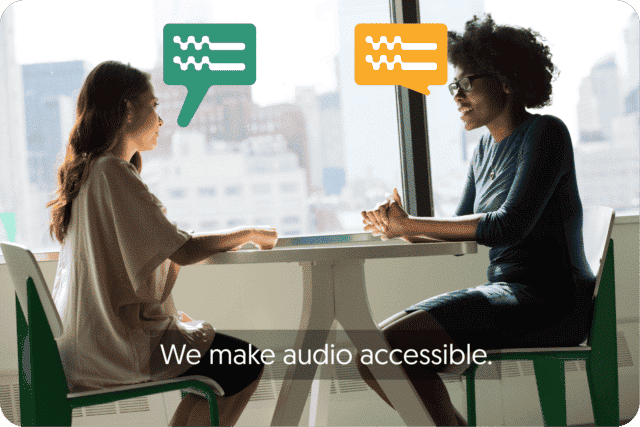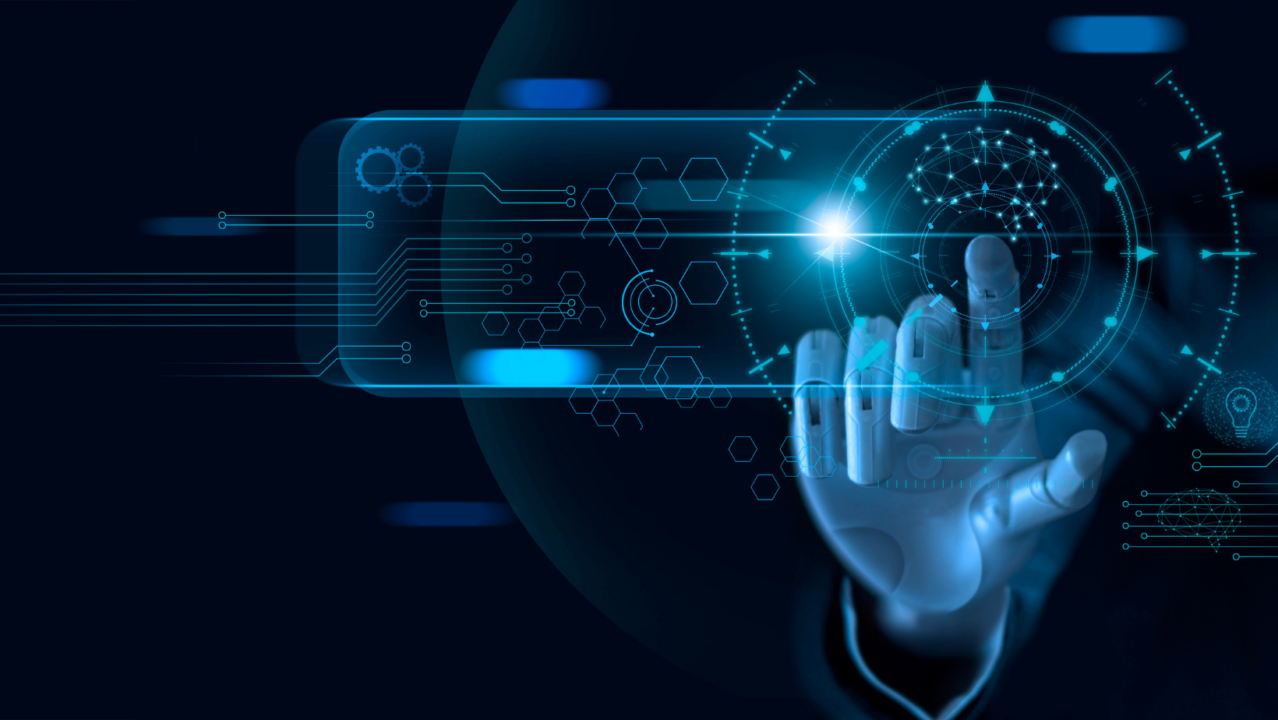The modern healthcare environment is marked by a paradoxical challenge: as technology has advanced, the burden of documentation on medical professionals has surged to unprecedented levels. Recent statistics paint a concerning picture, indicating that physicians often spend twice as much time on documentation as they do on direct patient care. This imbalance is not just a minor inconvenience; it represents a significant shift in how healthcare providers allocate their most precious resource—time.
Table of contents
- The Rising Tide of Documentation in Healthcare
- Understanding Medical Transcription
- The Value of Medical Transcription in Patient Care
- Time-Saving Benefits of Medical Transcription for Healthcare Professionals
- Overcoming Challenges with Medical Transcription
- Future Directions: Medical Transcription and Technological Advancements
- Why should you consider Amberscript
The Rising Tide of Documentation in Healthcare
The advent of Electronic Health Records (EHRs) was heralded as a breakthrough for patient care management. By digitizing patient histories, treatments, and outcomes, EHRs promised to make patient data more accessible, streamline care processes, and enhance the continuity of care across different healthcare settings. However, the reality has been far more complex. While EHRs have undoubtedly increased data accessibility, they have also introduced a substantial administrative load, requiring physicians to spend considerable time inputting information into digital systems. This shift towards more screen time and less patient interaction is a trend that concerns both healthcare providers and patients alike.
The consequences of the burgeoning documentation requirements are multifaceted and deeply concerning for the healthcare industry:
- Physician Burnout: The relentless pressure to keep up with documentation, on top of managing patient care, contributes significantly to physician burnout. Burnout not only affects the mental and physical health of healthcare providers but also impacts their ability to deliver high-quality care. A burned-out physician is more likely to experience decreased job satisfaction, reduced productivity, and may even leave the profession, exacerbating the existing shortage of healthcare professionals.
- Diminishing Patient Contact Hours: As more time is devoted to filling out forms and updating electronic records, the time available for face-to-face patient interactions decreases. This reduction in patient contact hours can erode the quality of the physician-patient relationship, a cornerstone of effective healthcare. When physicians are seen as more engaged with their computers than with their patients, it can lead to a decrease in patient satisfaction and trust, potentially impacting patient outcomes.
- Compromised Care Quality: Perhaps the most significant concern is the fear that the quality of care may be compromised. With the focus shifted towards documentation, there is less time for critical thinking, patient consultation, and the nuanced understanding of patient needs that is essential for delivering personalized care. Additionally, the cognitive load associated with managing extensive documentation can detract from a physician’s ability to concentrate fully on the patient’s condition, leading to potential oversights or errors.
Understanding Medical Transcription
Medical transcription stands as a pivotal element in the healthcare documentation process, bridging the gap between the dynamic, often hectic environment of patient care and the need for meticulous, accessible patient records. This critical task involves the conversion of voice-recorded reports, as dictated by physicians or other healthcare professionals, into accurate text format. Let’s delve deeper into the nuances of medical transcription and understand its evolving role in the digital age.
The Process of Medical Transcription
The journey of medical transcription begins with healthcare professionals dictating their notes, observations, diagnoses, and treatment plans into a recording device during or after patient encounters. These voice recordings capture the intricate details of patient interactions, from the presenting symptoms and medical history to the treatment strategies and follow-up care instructions.
Once recorded, these audio files are forwarded to professional medical transcriptionists. These specialists are skilled in the language of medicine, adept at interpreting complex medical jargon, and trained to transcribe these recordings with both speed and precision. Their expertise extends beyond simple transcription; they must understand context, recognize inconsistencies, and ensure that the transcribed document accurately reflects the intended information. This process is crucial for maintaining a coherent and accurate medical record that is both useful for ongoing patient care and legally sound.
Integration of Technology
The digital transformation has significantly impacted the field of medical transcription, with advancements in speech recognition software and artificial intelligence (AI) leading the charge. These technologies are being increasingly integrated into the transcription process, offering several key benefits:
- Enhanced Efficiency: AI-powered speech recognition software can transcribe audio to text much faster than manual transcription. This speed is paramount in high-volume healthcare settings where timely documentation can influence patient care and workflow management.
- Reduced Turnaround Times: The integration of technology reduces the lag between dictation and the availability of transcribed documents. Rapid turnaround times ensure that patient records are updated promptly, facilitating better communication among care teams and more immediate follow-up actions when necessary.
- Improved Accuracy: While human transcriptionists bring nuanced understanding and contextual awareness to their work, AI and machine learning algorithms continually learn from corrections and edits, enhancing their accuracy over time. This symbiotic relationship between human expertise and technological precision aims to minimize errors and inconsistencies in medical records.
- Cost-Effectiveness: Automating part of the transcription process can also be cost-effective for healthcare organizations. By reducing the reliance on human transcriptionists for the initial draft, institutions can allocate resources more efficiently, focusing human expertise where it is most needed—on complex cases and quality assurance.
The Value of Medical Transcription in Patient Care

Medical transcription is not merely an administrative tool; it’s a catalyst for enhancing the quality of patient care. Its value extends beyond the tangible benefits of streamlined documentation to significantly impact the physician-patient relationship and, ultimately, patient outcomes. Let’s explore how this critical service fosters a more patient-centered approach to healthcare delivery.
Enhancing the Physician-Patient Relationship
The dynamics of the physician-patient interaction are fundamental to effective healthcare. In recent years, the proliferation of digital documentation requirements has, paradoxically, introduced barriers to this interaction. Physicians find themselves divided between the patient in front of them and the digital device that records their encounter. Medical transcription offers a solution to this dilemma.
By delegating the task of documentation to transcription services, physicians are afforded the opportunity to redirect their focus entirely to the patient. This reduction in screen time is not trivial. It allows for more eye contact, better non-verbal communication, and a greater sense of presence and attentiveness. Such an environment is conducive to building trust—a cornerstone of the therapeutic relationship. Patients who feel seen and heard are more likely to be open and honest about their symptoms, concerns, and lifestyle, providing the physician with a more comprehensive understanding of their health.
Moreover, this enhanced interaction lays the groundwork for shared decision-making. With a stronger rapport, patients are more engaged in their care plan, understanding their options, and making informed choices alongside their physician. This collaborative approach is not only empowering for patients but also leads to higher satisfaction with the care received, reinforcing the physician-patient bond.
Improved Patient Outcomes
The benefits of medical transcription extend into the very outcomes of patient care. When physicians are liberated from the burdens of documentation, they can allocate more time and mental energy to the clinical aspects of their role. This shift allows for a deeper engagement with the patient’s story, more thorough examinations, and a more thoughtful analysis of symptoms and test results. Such meticulous attention can lead to more accurate diagnoses and tailored treatment plans that address the unique needs of each patient.
Several case studies and research findings corroborate the positive impact of transcription services on patient outcomes. For instance, practices that have integrated transcription services report significant improvements in the efficiency and quality of patient visits. Physicians are able to see more patients without sacrificing the quality of care, thanks to the time saved from documentation. Furthermore, the accuracy ensured by professional transcription services means that patient records are reliable sources of information for ongoing and future care, reducing the likelihood of medical errors.
In settings where transcription services have been utilized, there has been a notable improvement in patient follow-up and adherence to treatment plans. With more accurate and timely documentation, healthcare providers can better track patient progress, adjust treatments as necessary, and provide prompt responses to patient inquiries. This comprehensive approach to patient management fosters a cycle of continuous care improvement.

Best Practices for Transcribing Medical Dictations: Ensuring Accuracy and Patient Care
Read BlogTime-Saving Benefits of Medical Transcription for Healthcare Professionals
In the demanding environment of healthcare, time is a precious commodity. Medical professionals often find themselves caught in a relentless cycle of patient care and administrative duties, with the latter significantly encroaching on the time available for the former. Medical transcription services emerge as a vital solution in this context, offering a means to reclaim valuable hours. This redirection of documentation responsibilities towards transcription experts not only augments practice efficiency but also substantially elevates productivity levels. Below, we delve into the multifaceted time-saving benefits that medical transcription provides to healthcare professionals.
Enhancing Practice Efficiency
The implementation of medical transcription services within a healthcare practice streamlines the documentation process. Traditional methods of documentation can be cumbersome, requiring significant time and attention from medical staff. Transcription experts specialize in efficiently converting voice-recorded notes into written records, significantly speeding up this process. This efficiency gain is not just about turning audio into text; it’s about integrating these transcribed documents seamlessly into patient records, ensuring that all information is accurately captured and easily accessible. The result is a smoother, more efficient workflow that allows healthcare providers to focus more on patient care and less on administrative tasks.
Boosting Productivity
The knock-on effect of improved efficiency is a noticeable boost in productivity. With transcription tasks offloaded, physicians and other healthcare professionals can see more patients or spend more time with each patient, as needed. This ability to optimize patient interaction without compromising on the quality of care or documentation integrity is a significant benefit. Moreover, productivity isn’t just about the quantity of work done but also the quality. By reducing the mental load associated with documentation, healthcare professionals can dedicate more cognitive resources to clinical decision-making, improving the quality of patient care delivered.
Real Testimonials from Practitioners
The tangible benefits of medical transcription are best illustrated through the experiences of those who have integrated it into their practices. Many practitioners share stories of transformation, detailing how transcription services have recaptured hours that were previously lost to documentation. For example, a family physician noted that before using medical transcription services, evenings and weekends were frequently consumed by catching up on patient notes. After outsourcing this task, they were able to reclaim these hours, significantly improving their work-life balance and overall job satisfaction.
Another testimonial comes from a specialist who found that the detailed and accurate transcriptions allowed for more thorough patient follow-ups. The time saved enabled them to dive deeper into research and continuous learning, enhancing their expertise and the care offered to patients. These real-life examples underscore the profound impact that medical transcription can have on individual practitioners and their ability to provide high-quality healthcare.
Redirecting Time Towards Direct Patient Care and Personal Well-Being
One of the most significant advantages of medical transcription is the freedom it affords healthcare professionals to allocate their time more meaningfully. The hours saved through efficient transcription can be redirected towards direct patient care, allowing for more in-depth consultations, more attentive patient interaction, and ultimately, better patient outcomes. Furthermore, the benefits extend beyond professional duties. Physicians and healthcare workers report an improvement in personal well-being, as they find more time for self-care, family, and leisure activities—factors crucial for preventing burnout and sustaining a long and fulfilling career in healthcare.

Request a quote for medical transcription
Overcoming Challenges with Medical Transcription
While the advantages of medical transcription are manifold, its adoption is not without hurdles. Concerns regarding accuracy, patient privacy, and system integration persist, making some healthcare providers hesitant to fully embrace this solution. However, a careful selection process and advancements in technology are paving the way for overcoming these challenges effectively.
Addressing Accuracy and Privacy Concerns
Accuracy in medical transcription is paramount; a misinterpreted word can significantly alter a patient’s treatment plan. Similarly, patient privacy is a cornerstone of healthcare, and any breach could have serious implications. To mitigate these concerns, healthcare providers should diligently select transcription services that not only demonstrate a track record of high accuracy but also adhere to stringent privacy protocols.
- Choosing the Right Service: Look for transcription services that employ highly skilled transcriptionists with specialized training in medical terminology and a deep understanding of the healthcare sector they serve. Additionally, services that incorporate a rigorous quality assurance process, including multiple levels of review, can further ensure the accuracy of transcribed documents.
- Security Protocols: It’s crucial to partner with transcription services that are compliant with health information privacy regulations, such as HIPAA in the United States. These services should implement robust data encryption, secure transmission methods, and strict access controls to protect patient information.
Seamless Integration with Existing Systems
Another challenge is ensuring that the transcription service integrates smoothly with existing Electronic Health Records (EHR) systems and workflows. A seamless integration facilitates a more efficient documentation process, enabling healthcare providers to access transcribed documents directly within the patient’s electronic record.
- Compatibility and Customization: Opt for transcription services that offer flexible solutions tailored to align with your specific EHR system and workflow preferences. This customization can range from direct integration into the EHR system to providing easily importable document formats.
- Workflow Optimization: Effective transcription services work not just as a standalone solution but as an integrated component of the broader healthcare operation. They should enhance, rather than disrupt, existing workflows, contributing to a more streamlined and efficient documentation process.
Future Directions: Medical Transcription and Technological Advancements
The landscape of medical transcription is on the cusp of transformative change, driven by rapid advancements in artificial intelligence (AI) and machine learning (ML). These technologies are set to redefine what’s possible, offering unprecedented levels of accuracy, efficiency, and integration.

Enhanced Accuracy and Speed
AI and ML algorithms are increasingly capable of understanding context, recognizing nuances in speech, and learning from corrections, thereby continuously improving their transcription accuracy. This learning capability, combined with the ability to process speech in real-time, promises to significantly reduce transcription errors and turnaround times.
Disruptive Technologies
Beyond improving existing transcription processes, AI and ML are poised to introduce entirely new capabilities. For instance, real-time transcription during patient visits could become a reality, providing immediate documentation without the need for post-visit dictation. Additionally, predictive text and automated summarization technologies could further streamline the documentation process, reducing the time required for note completion.
Integration and Interoperability
As AI becomes more sophisticated, its integration with EHR systems and other healthcare technologies will become more seamless. This interoperability will facilitate a more cohesive healthcare IT ecosystem, where data flows freely and securely between systems, improving both the efficiency of care delivery and the patient experience.
Why should you consider Amberscript
Benefits of using Amberscript
Amberscript’s services are:
Edit your text in minutes or leave the work to our experienced transcriptionists.
Our experienced transcriptionists and thorough quality controls ensure 100% accuracy of transcripts.
Through a series of integrations and API interfaces, you can fully automate your workflows.
Your data is in safe hands. We are GDPR compliant + ISO27001 and ISO9001 certified.



